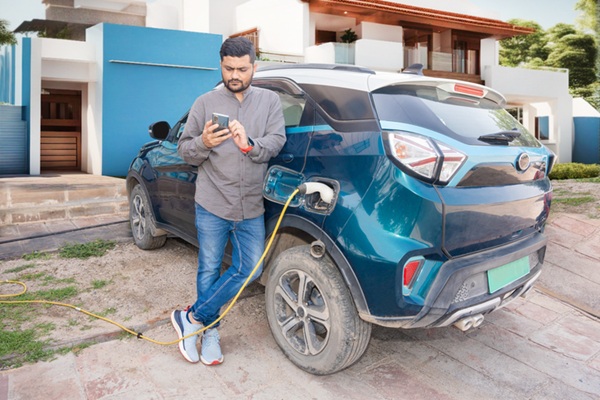.png)

Nilanjan Banik is a Professor at the School of Management, Mahindra University, specialising in trade, market structure, and development economics.
July 12, 2025 at 3:25 AM IST
There’s a blind spot in India's electric vehicle ambitions, which sits deep inside the battery. Lithium, neodymium, dysprosium, praseodymium are rare earth elements that power electric vehicle motors, batteries, and electronics. And India imports most of them from a single source: China.
In late 2024, China tightened its grip on rare earth exports, citing national security and environmental concerns. It was a sharp reminder of where power lies in the global clean-tech race. China controls more than 70% of global rare earth production and refining. India’s $240 billion auto industry just found itself exposed.
This is no time for wishful thinking. If India is serious about electrifying transport and building clean-tech self-reliance, it must first learn how others played this game.
Smart Diversions
The United States didn’t panic when China pulled the plug. It improvised. US companies quietly redirected supply chains through third countries, mostly Thailand and Mexico. Between December 2024 and April 2025, US imports of antimony oxide (a type of rare earth material) from the two nations reached approximately 3,834 metric tonnes, more than the previous three years combined.
None of it was listed as coming from China.
That’s because it wasn’t, at least on paper. In reality, the materials were shipped from China to these intermediaries. There, they were relabelled and re-exported to the US, often disguised as unrelated goods such as zinc, iron, or even art supplies. US regulations permit this kind of re-routing, so long as shipments are licensed. And Beijing has no easy way to stop it.
Reuters traced over 3,366 tonnes of these shipments to Thailand's Unipet Industries, a subsidiary of Chinese firm Youngsun Chemicals. The origin of the cargo? Omitted from shipping documents. The destination? US buyers who didn’t have to deal with Chinese customs directly.
The message is clear: when one door shuts, savvy strategies find others to slip through.
Strategic Shifts
China itself knows this playbook well. After the 2008 global financial crisis and a rising tide of US tariffs, especially under the Trump administration, Beijing began moving production out of mainland China. But it wasn’t retreat; it was rerouting.
First, Chinese manufacturers shifted operations to lower-cost regions like the Greater Mekong subregion, Central America, and parts of Africa. That kept their goods globally competitive while sidestepping trade friction.
Second, by relocating factories, Chinese firms avoided direct hits from tariffs. In April 2024, US Trade Representative Katherine Tai accused China of funnelling steel products through Mexico to circumvent trade restrictions.
US imports from Mexico reached $475 billion in 2023—up $20 billion from the year before. Imports from China dropped by $10 billion to $427 billion.
Chinese foreign direct investment in Mexico tripled to $3.7 billion in 2023 when compared to the decade-long average, as over 30 firms—including EV giants BYD and Chery—set up shop there. Container traffic from China to Mexico rose by 22% in 2024. China had simply redrawn the map to stay in the game.
Third, China has also used global investments in Africa and Asia to ease pressure on its own energy and raw material needs. In Myanmar, Chinese companies built six hydropower plants and a thermal power station. In Vietnam, they invested in power transmission infrastructure and copper processing facilities. The payoff? Exports from Vietnam to the US rose 40% between 2018 and 2024.
For China. Foreign investment isn’t just about access. It’s about leverage.
India’s Turn
So, what must India do?
Step one: Secure alternatives. India should work with friendly countries that can serve as neutral conduits for rare earths, especially those with stables ties to both India and China. This buys time, but it’s a temporary fix.
Step two: Invest overseas. Africa holds vast, underdeveloped reserves of lithium, cobalt, and copper. India is already eyeing assets in Zambia, Congo, and Australia. That effort must be scaled up and fast-tracked. Australia, the world’s third-largest producer of rare earth elements, should be a strategic partner.
Step three: Build strength at home. That means encouraging new entry into mining, funding rare earth processing, and creating a research ecosystem to develop substitutes. The government’s production-linked incentive schemes under under Atmanirbhar Bharat must go beyond EV assembly lines and start backing rare earth supply chains from the ground up.
India must also deepen cooperation with countries like the US, Japan, and Australia, not just for raw materials, but for tech and research support. China may dominate rare earth tech today, but the gap is not insurmountable.
If India wants to lead the global EV transition, it can’t afford to be a bystander in the rare earth game. These materials may lie buried in foreign soil, but the strategy to secure them can be hammered out at home.
Because no matter how sleek the car, it won’t move an inch without the right minerals.




